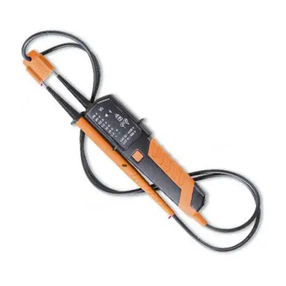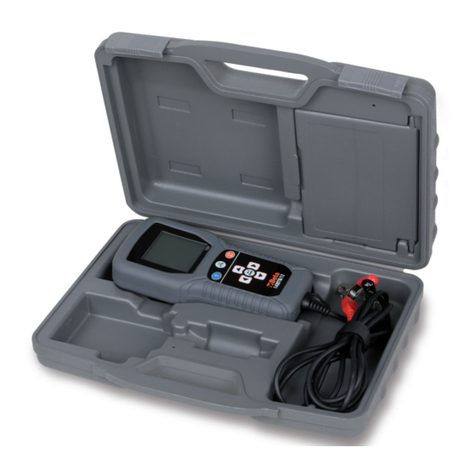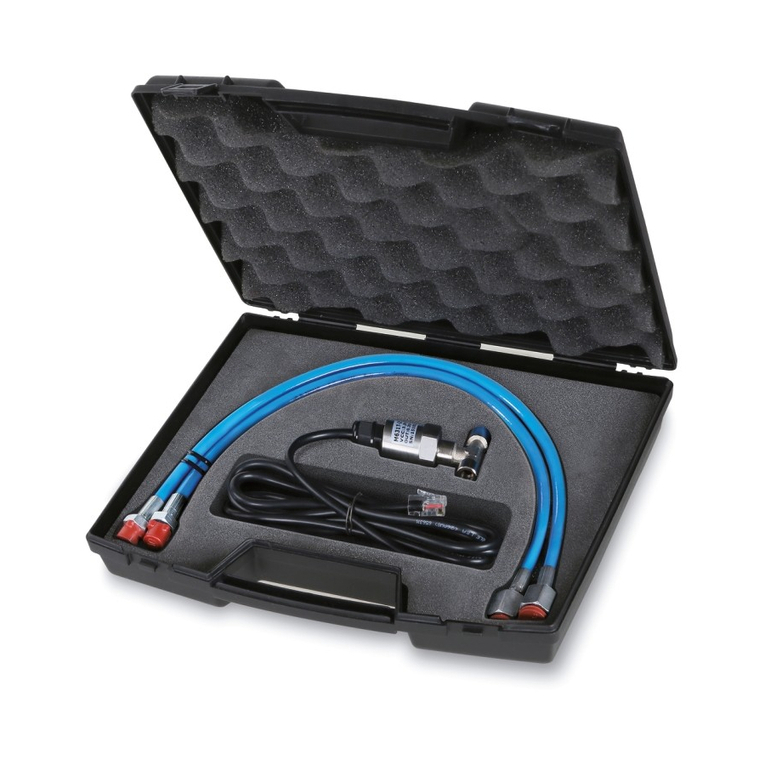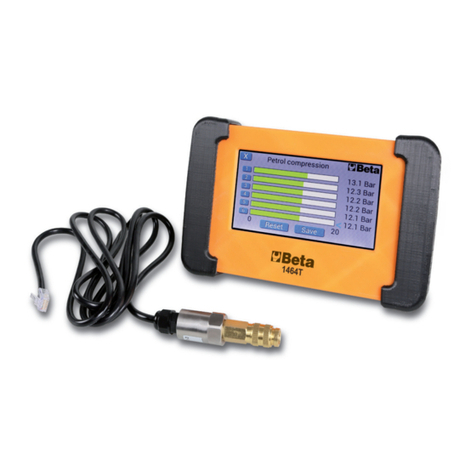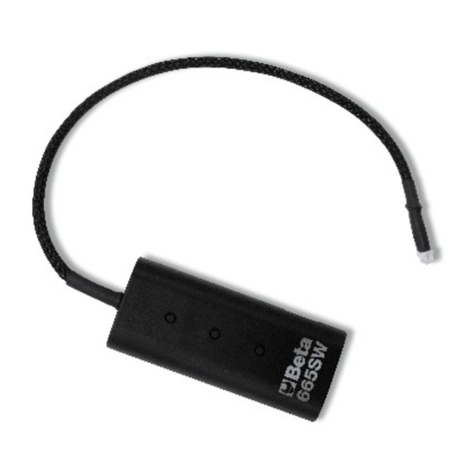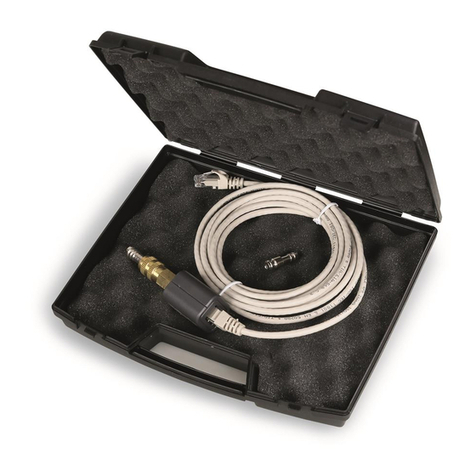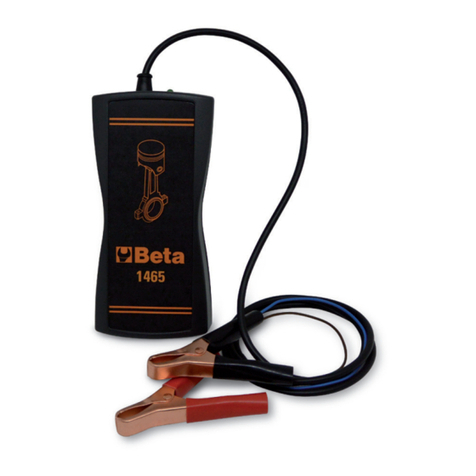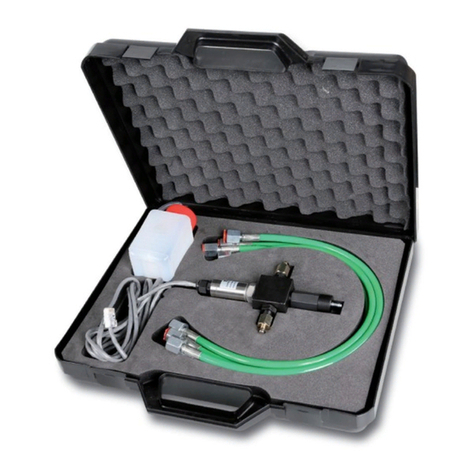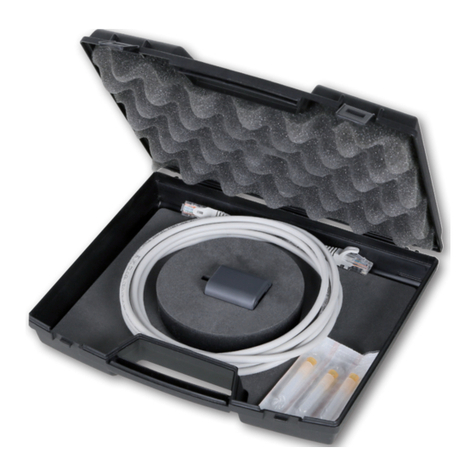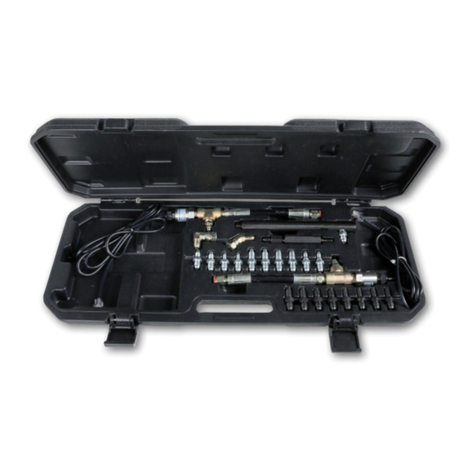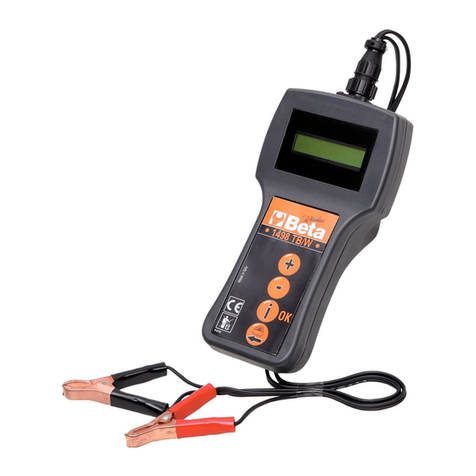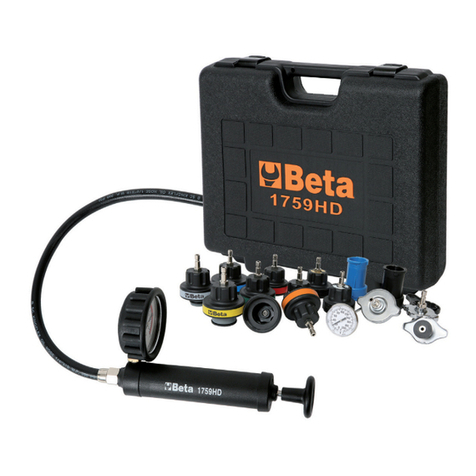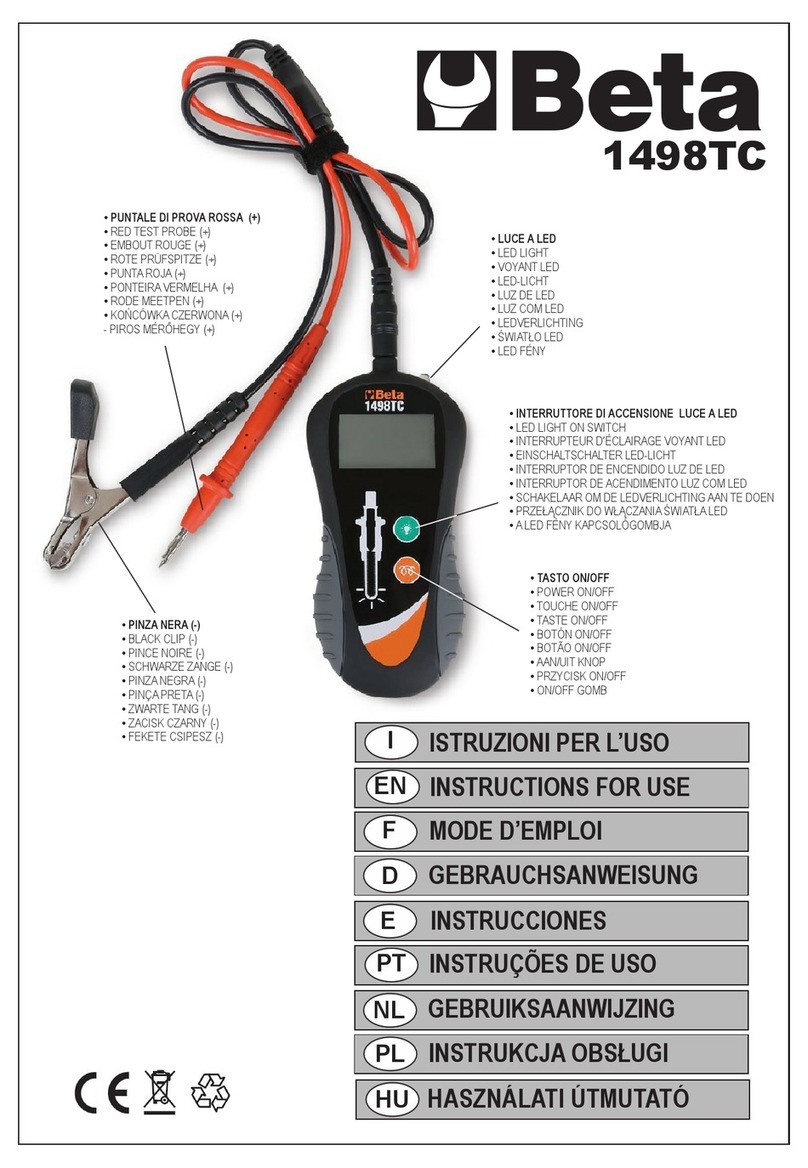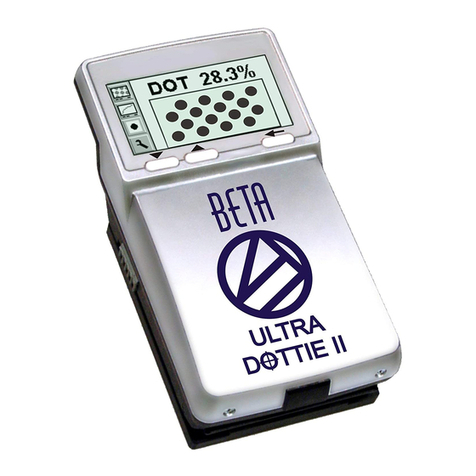MANOMETRO 80 BAR (adattatori 960 CD/TP diesel)
Selezionando “manometro 80 bar”, il tester si predisporrà per controllare qualsiasi pressione fino a 80
bar. Sul display verrà visualizzato di default il valore di lettura effettivo.
È possibile spostarsi tra il valore di lettura massimo e quello effettivo utilizzando il pulsante freccia
destra.
Il valore di lettura massimo può essere eliminato utilizzando il pulsante freccia sinistra.
Il valore di lettura massimo viene memorizzato anche se il display visualizza il valore di lettura
effettivo; occorre semplicemente premere il pulsante freccia destra per verificare il valore di lettura
massimo memorizzato.
SISTEMA INIEZIONE BENZINA (adattatori 960 BPC/TP)
Scegliendo l’opzione “sistema iniezione benzina”, il tester si predisporrà per controllare la pressione
della benzina. Sul display verrà visualizzato di default il valore di lettura effettivo.
È possibile spostarsi tra il valore di lettura massimo e quello effettivo utilizzando il pulsante freccia
destra.
Il valore di lettura massimo può essere eliminato utilizzando il pulsante freccia sinistra.
Il valore di lettura massimo viene memorizzato anche se il display visualizza il valore di lettura
effettivo; occorre semplicemente premere il pulsante freccia destra per verificare il valore di lettura
massimo memorizzato.
TEST COMMON RAIL - CIRCUITO BASSA PRESSIONE (adattatori 960 BPC/TP)
Cos’è il sistema common rail?
Il sistema common rail è uno dei più avanzati sistemi di iniezione di carburante diesel, basato
sull’iniezione diretta del carburante nel cilindro (iniezione diretta) ad alta pressione (300 ÷ 1600 bar).
Uno dei grandi vantaggi di questo nuovo sistema risiede nel fatto che gli ugelli vengono controllati
elettronicamente, per cui una centralina elettronica stabilisce qual è l’esatto quantitativo di carburante
richiesto dal motore e invia un segnale elettrico agli iniettori affinché venga aperto l’ugello. La
pressione del carburante nel common rail passa dunque attraverso gli ugelli ed entra nei cilindri. Il
nome common rail deriva dal fatto che tutti gli iniettori sono collegati a un common rail.
Il sistema di iniezione è costituito da due parti distinte: il circuito di bassa pressione e il circuito di alta
pressione.
Il circuito di bassa pressione è responsabile del trasporto del carburante alla pompa di alta pressione
in condizioni ottimali di pressione, filtraggio ecc.
Con il tester per il controllo della pressione 960TP, è possibile verificare l’intero circuito di bassa
pressione; il maggior numero di guasti si verifica in questo circuito di bassa pressione.
Il circuito di bassa pressione è essenzialmente costituito da: serbatoio carburante, pompa carburante,
filtro, regolatore di pressione e tubi.












